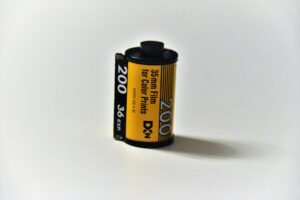How to Use Filters in Photography: A Comprehensive Guide
In the world of photography, filters are indispensable tools that can transform an ordinary shot into something extraordinary. Whether you’re a seasoned professional or an amateur enthusiast, understanding how to use filters effectively can greatly enhance the quality of your photographs. This guide will walk you through the various types of filters, their uses, and tips on how to incorporate them into your photography to create stunning images.

What Are Photography Filters?
Photography filters are accessories that you attach to the front of your camera lens. They modify the light entering the lens, helping you achieve various effects, reduce glare, enhance colors, or protect your lens. Filters come in different shapes, sizes, and types, each serving a specific purpose.
Types of Filters and Their Uses
- UV Filters:
- Purpose: Primarily used to block ultraviolet light, which can cause a bluish cast in outdoor photography.
- Benefits: UV filters protect your lens from dust, dirt, and scratches without affecting the color or exposure of your images.
- Usage: They are often left on the lens permanently as a protective measure.
- Polarizing Filters:
- Purpose: Polarizing filters reduce reflections, glare, and increase color saturation, especially in skies and water bodies.
- Benefits: They can make skies appear bluer, foliage greener, and reduce the glare on water and glass surfaces.
- Usage: Rotate the filter to adjust the level of polarization. Ideal for landscape photography.
- Neutral Density (ND) Filters:
- Purpose: ND filters reduce the amount of light entering the lens without affecting the color balance.
- Benefits: They allow for longer exposure times, enabling effects like motion blur in waterfalls or a shallow depth of field in bright light conditions.
- Usage: ND filters are perfect for situations where you want to control exposure, such as shooting in bright sunlight or capturing motion in water or clouds.
- Graduated Neutral Density (GND) Filters:
- Purpose: GND filters are similar to ND filters but only darken a portion of the image, such as the sky, while leaving the rest of the scene unaffected.
- Benefits: They help balance exposure between the bright sky and darker foregrounds, making them ideal for landscape photography.
- Usage: Position the darker part of the filter over the bright area of your scene to achieve balanced exposure.
- Color Filters:
- Purpose: Color filters modify the color temperature of your images. They can either enhance or reduce certain colors.
- Benefits: Useful in black and white photography to create contrast, or in color photography to alter the mood and tone of the image.
- Usage: Experiment with different colors to see how they affect the overall feel of your photograph.
- Infrared Filters:
- Purpose: Infrared filters block all visible light and allow only infrared light to pass through, creating otherworldly images with unique contrasts and tones.
- Benefits: They are great for experimental photography, particularly for creating surreal landscapes.
- Usage: Requires long exposure times and is best used with a tripod for stability.

Tips for Using Filters Effectively
- Know Your Subject: Before using a filter, consider what you want to achieve with your photograph. Whether it’s enhancing color, reducing reflections, or balancing exposure, choose a filter that aligns with your creative vision.
- Experiment with Angles: Filters, especially polarizers, work differently depending on the angle of light. Rotate the filter and experiment with different angles to achieve the desired effect.
- Combine Filters: Don’t hesitate to combine filters for creative effects. For example, you can use an ND filter with a polarizer to both reduce light and enhance color saturation.
- Invest in Quality: Cheap filters can degrade image quality. Invest in high-quality filters to ensure your images retain sharpness and clarity.
- Practice: Like any other photography skill, using filters effectively takes practice. Experiment with different types and settings to see what works best for your style.
Conclusion
Filters are powerful tools that can significantly enhance your photography, providing you with greater control over your images. By understanding the different types of filters and how to use them, you can elevate your photography, capture more dynamic scenes, and express your creative vision more effectively. Whether you’re shooting landscapes, portraits, or experimenting with abstract photography, filters can help you achieve the perfect shot every time